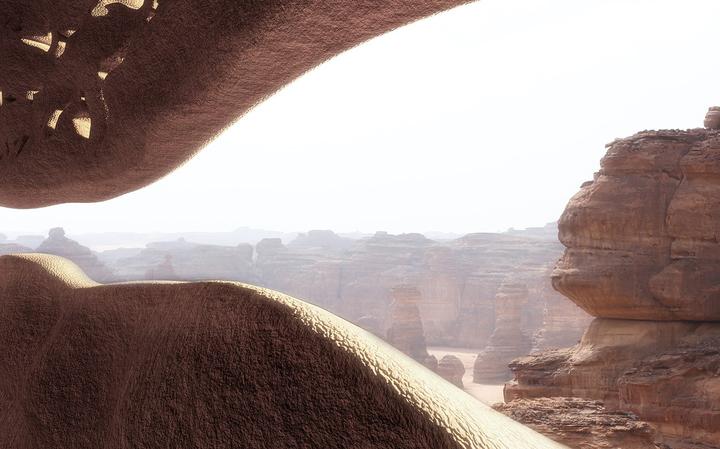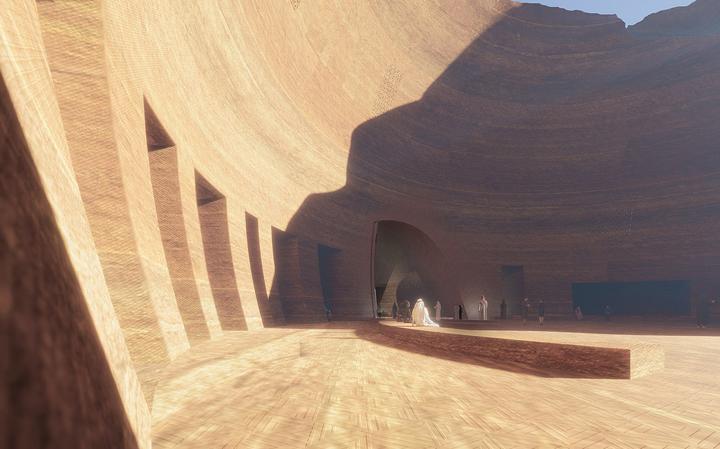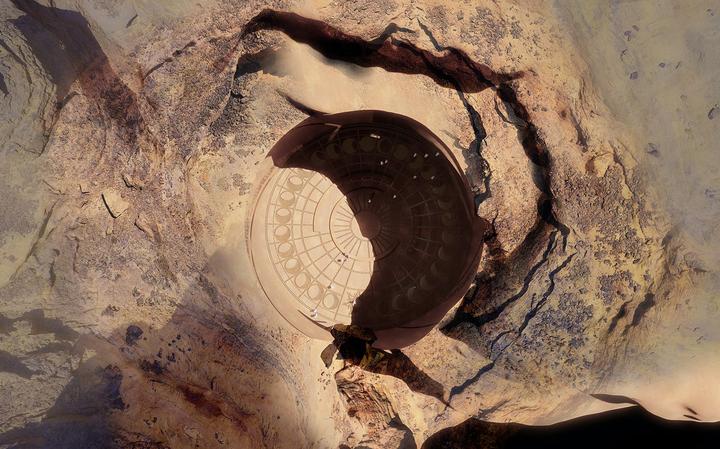Al Ula

Al-Ula is a world-renowned heritage area and one of the leading tourist destinations in the Kingdom.
It is administratively affiliated to the Madinah region in northwestern Saudi Arabia. The population of Al-Ula was estimated at 55,010 people, according to the latest official statistics issued by the General Authority for Statistics.
The Maraya Concert Hall in Al-Ula reflects the surrounding rock formations and is classified in the Guinness Book of Records as the largest mirrored building in the world. Al-Ula is named after the governorate’s altitude above Wadi Al-Qura, and it includes an oasis with about 2.3 million palm trees, which produce about 90,000 tons of dates every year.
Al-Hijr Archaeological Site (Madain Saleh) is the most attractive area in Al-Ula. It is 22 km away from Al-Ula. In 2019, the Sharaan Nature Reserve was established on the governorate’s land, with an area of 1,500 km2, to care for the local and Arab wild animals that Al-Ula is home to. The governorate also hosts a cultural center that is interested in the history and customs of the people of the old town.

Throughout history, Al-Ula occupied a strategic location linking southern and northern Arabia, on the ancient trade route called the Incense Road. It was a metropolis in the Bronze Age, and thus is one of the oldest cities in the Kingdom.
In the 20th century, a team of local and international archaeologists discovered archaeological sites in the governorate that indicate the presence of civilizations that flourished in Al-Ula before 3000 BC. The experts identified these civilizations from the archaeological inscriptions in Al-Ula, such as the Safaitic, Thamudic, Aramaic and Greek inscriptions.
Al-Ula is probably named for its height above Wadi Al-Qura. The exact date of the name is not known, but the people of Hijaz usually call the highest valleys Al-Awali, Al-Ma’ali or Al-Alia (all words signify “high” in Arabic). The first name known to Al-Ula is “Daden” when it was the capital of Al-Dadaaniah and Lihyaniya kingdoms. The location of that capital is called today Al-Khuraybah, which was known as the most developed city during the first millennium BC in the Arabian Peninsula. During the Nabataean Kingdom, it was called “Wadi al-Qura”, which was the home of the Thamud people. It was also known as “Al-Hijr”, a name that the Royal Commission for Al-Ula restored in 2020 instead of Madain Saleh.

The Nabataeans settled there and it was their main southern city. The Lihyanites also inhabited it in the 9th century BC, then the Nabateans reoccupied it in the 2nd century BC.
Historically, eight crops formed the economy of Al-Ula since the first millennium BC: barley, wheat, oats, figs, olives, citrus fruits, herbs and, most importantly, dates, which are grown in the historic oasis of Al-Ula.
Al-Ula Oasis is characterized by abundant water, as one of its suburbs contained 80 natural springs, around which acacia trees and juniper bushes grew. Today, there are 2.3 million palm trees in the oasis; these produce about 90,000 tons of all kinds of dates of each year, the most famous of which is Al-Barni, which accounts for 80% of the crop, in addition to the Mabroom, Al-Hilweh, Anbara and Medjool dates. The number of citrus trees in the oasis is 200,000, and there are about 90,000 Moringa trees.
A wide range of local and Arab animals live in Al-Ula, including the Arabian leopard, the Arabian wolf, the red fox, the rocky hyrax and the wild desert hare. It also contains the largest diversity of birds in the region, including the green bee-eater, the laughing dove, the lark, and birds of prey such as the eagle, the slapstick falcon, and the long-legged falcon. The governorate is still home to endangered animals, the most important of which is the Arabian leopard.
Al-Ula Governorate has a Royal Commission established in 2017, which is responsible for setting development plans that preserve the heritage and legacy of the governorate. This commission is one of four royal commissions in Saudi Arabia.
In 2019, the Royal Commission for Al-Ula Governorate announced the creation of Sharaan Nature Reserve, with an area of 1,500 km2, aimed at protecting and restoring local species of plants and animals in the region.
The Commission seeks to protect Al-Ula and preserve its heritage, monuments and nature, in addition to sustaining its historical capabilities and environmental components and investing in the individual capabilities of the people of Al-Ula, in a way that establishes sustainable growth. The Commission is also working on improving the tourism potential, and the facilities necessary to accommodate the requirements of visitors, in addition to the tools necessary to protect nature.
All roads that reach Al-Ula start from Madinah or Tabuk, as the two cities are approximately three hours away by car. To reach Al-Ula from Madinah, there are three roads, the shortest of which is the first road that follows the railway from Madinah, and the second road is via Madinah-Tabuk Road, along the railway. The third is a dirt road, which reaches the railway and from it to the north towards Al-Hijr.
Al-Ula Governorate is served by Prince Abdul Majeed Bin Abdulaziz Local Airport, which is 35 km away from its center. October 31, 2011 is a date that witnessed an important event for the governorate, as the first plane landed on the airport runway coming from the capital, Riyadh, to start operating the new airport in Al-Ula. The airport is built with local materials that go in line with the governorate’s environment. It was developed in mid-2020 to accommodate about 400,000 passengers annually, with a total area of 2.4 million square meters.